Best Château Gardens in the Loire Valley
Caroline Mills enjoys a series of château gardens and parks as she takes a road trip along the majestic Loire Valley.
Like any family home, the châteaux of the Loire are about people: the kings, queens, counts, dukes and their favoured garden designers who have all played a part in creating this unique landscape. Just as these powerful influencers of their day found themselves striving to build a better château than their neighbours, so too were they extending their living space with outdoor rooms, vying to create the best gardens and parkland.
Once the pleasure ground of Renaissance royalty, the Loire Valley has become an amusement park for today’s visitor. Often referred to as ‘the garden of France’, it includes the Loire’s scenic tributaries – including the Cher, Indre, Vienne, Sarthe, Loir (via the Sarthe) and Loiret – and these less stately but, dare one say, more attractive rivers also lay claim to many regal châteaux such as Chenonceau, Ussé or Lude.
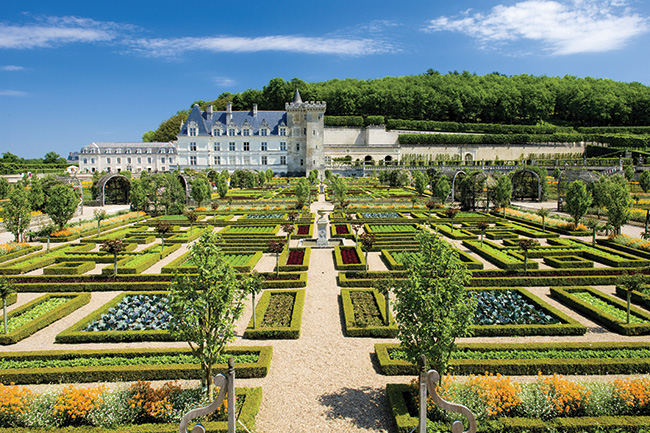
The parterres at the Château de Villandry © Shutterstock
There are more than 300 châteaux throughout the Loire Valley, many of them open to the public. While I love the magnificence of their interiors, my son prefers the outdoors, so prompted by his cries of, “not another château!”, a tour of château gardens and parks seemed an agreeable compromise. After all, to a young boy, once you’ve seen one royal bed, you’ve seen them all! We plotted our route, threading one château after another with gardens of varying characteristics, and spent a fascinating fortnight meandering from one riverside abode to the next.
Our tour began 45km south of Le Mans at the Château du Lude, the most northerly Loire château. With its turrets of creamy stone, it flaunts typical characteristics while its terraced gardens, designated a Jardin Remarquable, drop down to the Loir with fine views of the river from the curvy stone balustrade – all 200 metres of it. The highlight is the formal box garden that runs alongside the river.
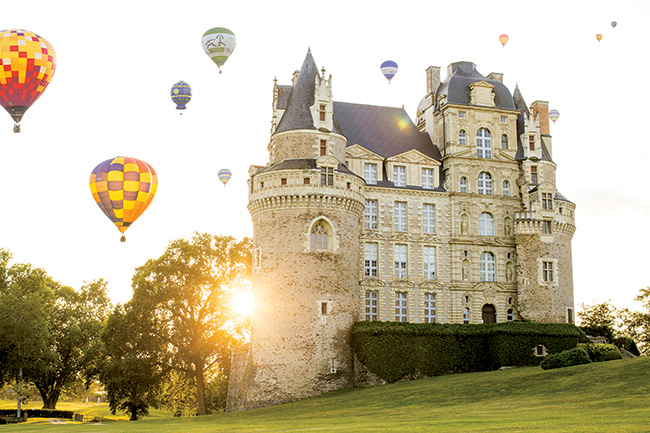
Château de Brissac has scenic river and lakeside walks © Pierre le Targat/Destination Angers
Less than 30km to the west of Lude is the Château de Bazouges, where we paid a fleeting visit as the grounds and building of this hidden gem are modest by comparison to many of the Loire. That said, it’s worth seeing for its extraordinary riverside setting.
We drove south, crossing the Loire for the first time at Angers, to Brissac-Loire-Aubance to visit the Château de Brissac. We wandered around the mature parkland, which offers excellent views of the château, reputedly the tallest in France, and plenty of scenic river and lakeside walks. Our evening overlooking the vineyards around Brissac was made more notable for the flurry of hot air balloons that regularly ascend from the grounds of the château. The sun had risen long before we arrived Doué-en-Anjou, southwest of Saumur, allowing time for the heat of the day to draw out the roses’ perfume, which pervaded the air as we stood among the stripes of colour. The town of Doué is famous for rose growing, with more than seven million rose bushes, representing 45 per cent of national production. There are also several rose gardens, such as Roseraie Foullon where more than 250 varieties are on show, many heavily scented. These gardens were once the pleasure grounds of the neighbouring château, home to the Musée aux Anciens Commerces which traces the history of retail trade from 1850 to 1950 and where you can find 20 reconstructed shops from a hat shop to a grocery store.
Continuing southeast, we reached the château-less town of Richelieu. One existed in the 17th century, built by Cardinal Richelieu, and, when standing, could rival many of the Loire’s châteaux (and those of Paris) in scale and opulence. It met an undignified end, the stone recycled for other buildings, but the parkland remains, with long avenues through woodland that’s particularly pretty in autumn. Our next stop, due north, was the Château de Rivau at Le Coudray. Here, beside the fairty-tale château, are 14 imaginative gardens dotted with contemporary art depicting children’s stories. We deemed the Gargantuan Potager to be the best of the collection, where rampant nasturtiums sprawl over the edges of the raised beds and pumpkins grow fat.
Passing the fortress at Chinon as we crossed the Vienne to head northeast, we stopped overnight in Rigny-Ussé beside the River Indre, one of the smaller tributaries of the Loire. The Château d’Ussé, which was the inspiration for Charles Perrault’s fairy tale, Sleeping Beauty, offers terraced formal gardens that were created by France’s most prestigious garden designer, André le Nôtre.
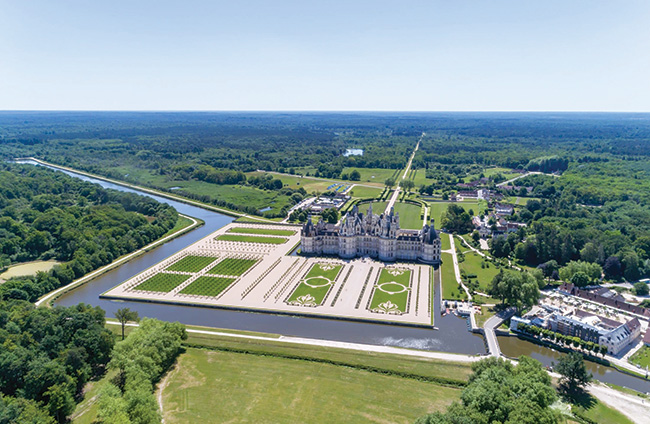
The gardens of Château de Chambord © ADT Touraine/Jean Christophe Coutand
Historic Woodland
Two neighbouring châteaux due east were our next stop. Azay-le-Rideau, on an island in the middle of the Indre, is one of the most alluring of all Loire châteaux, its reflection in the mirror of water lending it a magical, floating effect. While this might appear to be a deliberate landscape feature of Renaissance designers, it’s actually a development of the 1950s, when the château’s south terrace was removed and a branch of the river expanded to border the foundations.
In the grounds, winding alleys are filled with ‘exotic’ trees – or at least they were considered exotic when they were planted in the 18th and 19th centuries. The layout has been renovated extensively in recent years. While Azay-le-Rideau is one of the Loire’s most popular châteaux, nearby is the lesser-known Château de l’Islette. Just like its neighbour, it, too, sits on an island in the Indre and it is not dissimilar in appearance – in fact, we’d argue it is perhaps the more appealing of the two. It certainly was to Camille Claudel and Auguste Rodin, for the château was the romantic backdrop for their tumultuous love affair. Guests today may hire a rowing boat on the river, picnic in the grounds or relax in a riverside deckchair.
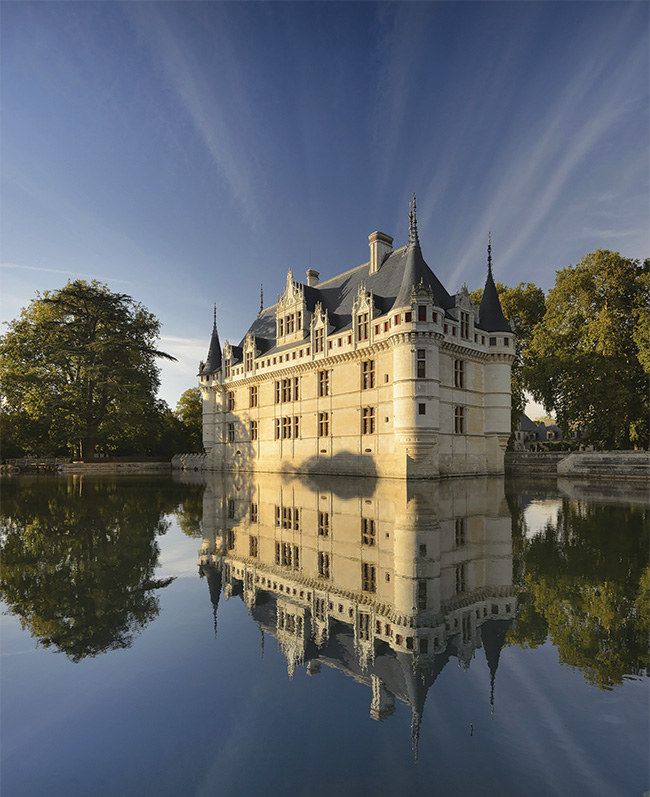
Château Azay-le-Rideau is one of the Loire’s most popular sights © Leonard de Serres
We were up early to arrive before the coach loads at nearby Château de Villandry, where the gardens are more famous than the dwelling. Everything is on a grand scale here and the sheer size impressed us more than any other Loire garden: the clipped box hedges (52km of them) in the ornamental garden, the length of the herb garden, the quantity of vegetables (approximately 115,000 plants) in the world’s largest kitchen garden… It’s worth making the effort to climb through the woods to the belvedere for the ultimate view across the garden.
Just like Lude and Villandry, Château de Valmer at Chançay, northeast of Tours, is surrounded by a Jardin Remarquable. It’s the formally designed potager that is most significant, where owner Alix de Saint Venant identified and planted thousands of forgotten heritage varieties of seeds, vegetables, and fruits, grown for flavour rather than commercial considerations. Many are varieties from the Loire region, making the garden an important historical and botanical record.
If old regional varieties of fruit and veg are the passion at Valmer, it’s tomatoes that are the obsession at the Château de la Bourdaisière, south of Chançay, nestled between the rivers Loire and Cher. The gardens, near Montlouis-sur-Loire, display more than 700 varieties in many shapes and colours: stripy, plain, long and thin, pear-shaped, miniature or fat… The château holds the National Collection, imaginatively planted among other vegetables, herbs and flowers.
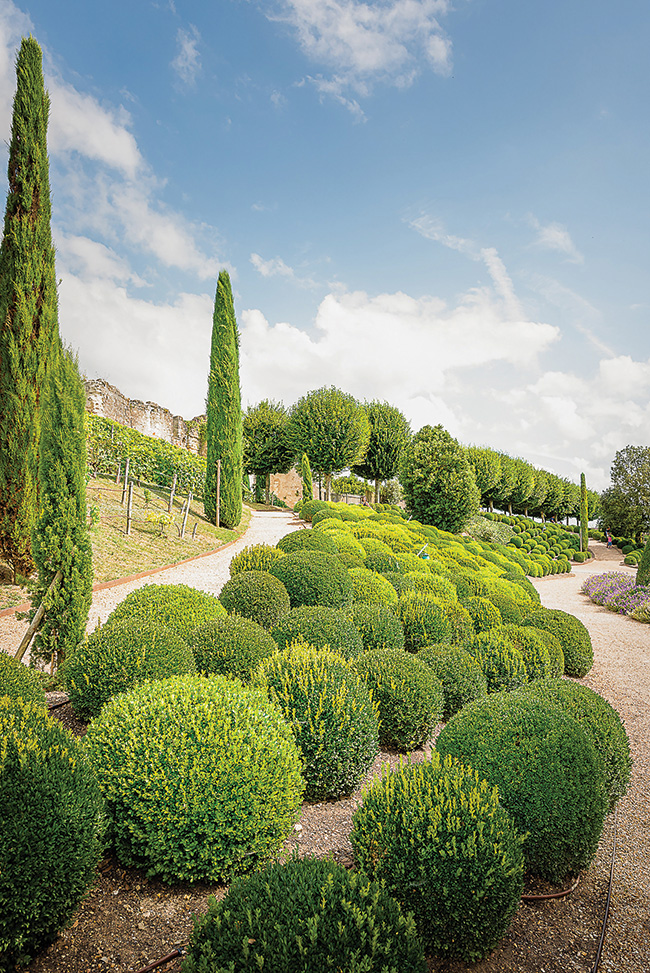
Château d’Amboise has fine terraced gardens © ADT Touraine/Jean Christophe Coutand
Our road trip talk was of growing tomatoes as we moved east, following the River Cher, to the Château de Chenonceau. Thank goodness we were not visiting the royal bedrooms for I’d have some explaining to do: either side of the château, which ceremoniously spans the Cher, are the formal gardens of love rivals Diane de Poitiers and Catherine de’ Medici, the mistress and the wife respectively of King Henri II. Box balls, swirly patterns in the grass and long pathways highlight the Renaissance fashion, though our favourite was the rustic Potager des Fleurs, the farm kitchen garden where cut flowers are grown for the château.
Our route then took us north to Amboise to visit a trio of beauties, starting with the Château d’Amboise. The residence of kings for centuries, it was the terraced gardens that appealed as one of the finest spots from which to view the River Loire. As well as a Jardin Remarquable, the gardens also have an LPO Refuge marque, thanks to the collaboration with France’s Bird Protection League to support and encourage the biodiversity of the Loire Valley. The gardens are home to more than 80 bird species.
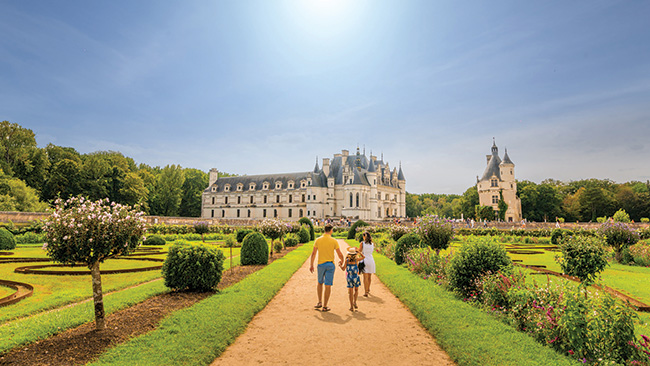
Château de Chenonceau features gardens nurtured by rivals Diane de Poitiers and Catherine de’ Medici © Jean Christophe Coutand
Artists and Festivals
While the neighbouring Château du Clos Lucé, once home to Leonardo da Vinci, was my family’s favourite out of the three Amboise-based visits thanks to the many da Vinci models and creations to be explored and interacted with in the park, it was the Château Gaillard to which I personally was drawn. Like Amboise, it’s a royal château, albeit more modest in size, and its gardens were created by 15th-century garden designer Dom Pacello de Mercogliano. At the Château d’Amboise, he was responsible for pumping water from the Loire to the terraced gardens. Here, he was responsible for introducing the first orange trees to France; the orangery, which was restored in 2015, is simply beautiful, and beyond the château, there are 15 hectares of parkland to explore.

The gardens of Château de Chambord © ADT Touraine/Jean Christophe Coutand
Following the Loire upstream, we visited Chaumont-sur-Loire where there are prime views of the river from the château’s parkland high above. Held in the grounds of the château, the annual Festival International des Jardins, which celebrated its 30th anniversary in 2022, takes on a different, usually thought-provoking theme each year. As we wandered from space to space, we found plenty to contemplate and even challenge the perception of what a garden is.
Through the town of Blois, we moved away from the Loire’s riverbank and followed the River Cosson into the Forêt Domaniale de Boulogne to visit the Château de Chambord. It’s the one château my family were keen to look inside – something to do with having no bedrooms. Here, it was Leonardo da Vinci’s double helix staircase that astonished before we ventured out into Chambord’s domain of 5,400 hectares.
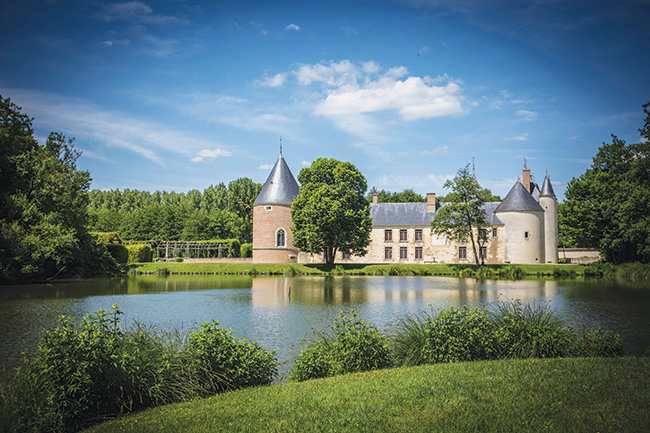
Château de Chamerolles is home to a restored Renaissance garden © Caroline Mills
Kitchen Gardens
Surrounded by a 32km-long wall, it is the largest enclosed forest in Europe; we walked for the remainder of the day on some of the 23km of paths, enjoying the oak woods and wildlife in the nature reserve. There’s a shorter 4km walk around Chambord’s canal and formal French garden, or if you prefer two wheels to two feet, bike hire is available within the grounds.
We were slowly making our way upstream, but the Loire still seemed imposingly wide when we crossed it again to reach the Château de Talcy, on the north side of the river from Chambord. With sweeping views over the Beauce Plain, between Blois and Orléans, the Talcy estate features a large farm complex that was renowned for its fruit production in the 18th century. Restoration of the garden and orchards began 25 years ago to create a conservation collection, and there are now hundreds of heritage varieties of apples, pears and plums grown in neat rows of espaliered, cordoned and fanned trees.
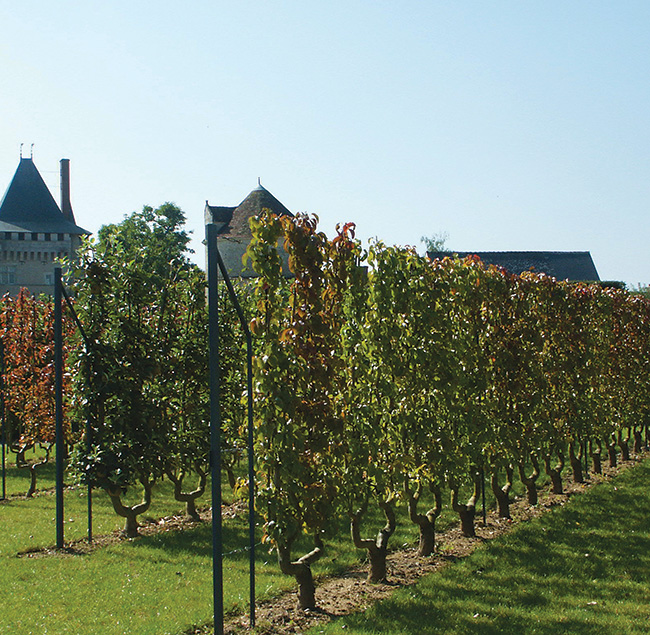
Château de Talcy features a large farm complex © Benoit Voisin
The Loire was becoming a familiar sight when we crossed it for the second time in a day at Beaugency and as we passed through Orléans. We moved away from the river again to head northeast, to the Château de Chamerolles at Chilleurs-aux-Bois. Here, a Renaissance garden has been restored and developed, using old plans, with parterres, bordered by pergolas covered with hops, vines and roses. For visitors interested in garden history, there’s plenty to see but it wasn’t awarded top spot by my family, who preferred the little lakeside walk that affords handsome views of the château. At Château de la Bussière, however, while I perused what was growing in the potager – also deemed a Jardin Remarquable – my family ran to the osier beds, where paths and willow mazes, miniature hides and bridges lure adventure seekers into the surrounding woodland.
We ended our tour in Gien, a 15-minute drive southwest of Bussières. Dusk settled on the Loire’s banks and made them and the town glow rose pink in the fading evening light. We counted the 12 arches on the handsome stone bridge which crosses the Loire to the Château de Gien, its vast span testimony to the might of France’s longest river, with its many glorious châteaux and their glorious gardens.
From France Today magazine
Share to: Facebook Twitter LinkedIn Email
More in best chateaux to visit in France, chateau gardens, chateaux, chateaux in France, loire valley
Leave a reply
Your email address will not be published. Required fields are marked *

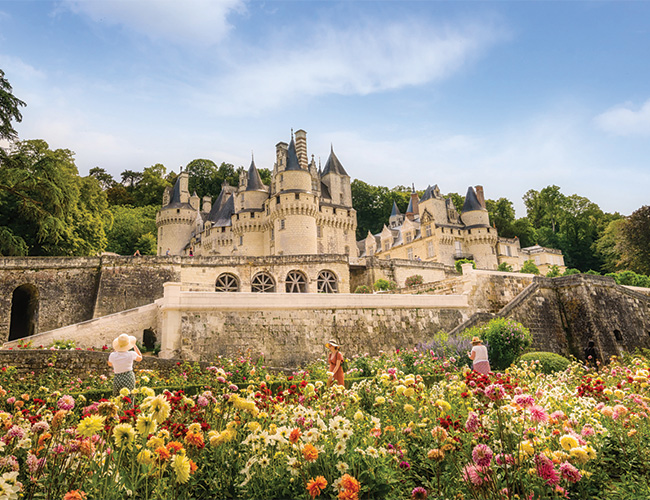



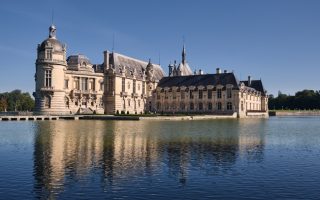
REPLY